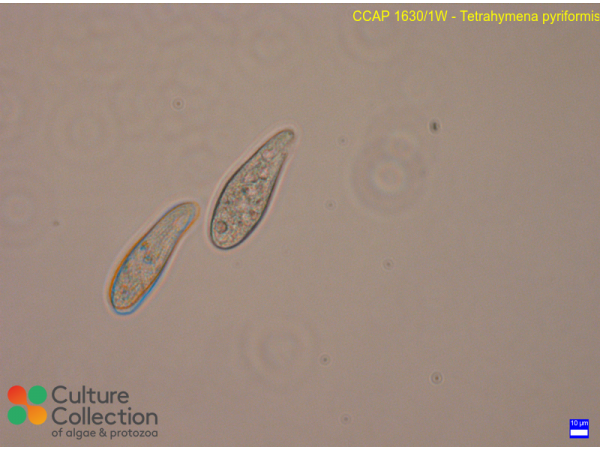References [ 24 ]
Becks L, Hilker FM, Malchow H, Jürgens K & Amdt H (2005) Experimental demonstration of chaos in a microbial food web. Nature (Letters) 435/30: 1226-1229.
Joaquim-Justo C, Detry C, Caufman F & Thomé J (2004) Feeding of planktonic rotifers on ciliates: a method using natural ciliate assemblages labelled with fluorescent microparticles. Journal of Plankton Research 26(11): 1289-1299.
Kilvington S & Beeching J (1995) Identification and epidemiological typing of Naegleria fowleri with DNA probes. Applied and Environmental Microbiology 61(6): 2071-2078.
DOI: none
Kilvington S & Beeching J (1995) Development of a PCR for identification of Naegleria fowleri from the environment. Applied and Environmental Microbiology 61(10): 3764-3767.
DOI: none
Vaitkevicius K, Lindmark B, Ou G, Song T, Toma C, Iwanaga M, Zhu J, Andersson A, Hammarström M, Tuckl S & Wai SN (2006) A Vibio cholerae protease needed for killing of Caenorhabditis elegans has a role in protection from natural predator grazing. PNAS 103(24): 9280-9285.
Houghton G, Healey LJ & Matthews RA (1992) The cellular proliferative response, humoral antibody response, and cross reactivity studies of Tetrahymena pyriformis with Ichthyophthirius multifiliis in juvenile carp (Cyprinus carpio L.). Developmental and Comparative Immunology 16: 301-312.
DOI: none
Kher CP, Doerder FP, Cooper J, Ikonomi P, Achilles-Day U, Küpper FC & Lynn DH (2010) Barcoding Tetrahymena: Discriminating species and identifying unknowns using the cytochrome c oxidase subunit I (cox-1) barcode. Protist 162: 2-13.
Arndt K, Hofmann D, Gehre M & Krumbiegel P (1998) 15N investigation into the effect of a pollutant on the nitrogen metabolism of Tetrahymena pyriformis as a model for environmental medical research. Environmental Health Perspectives 106: 493-497.
Thelaus J, Forsman M & Andersson A (2008) Role of productivity and protozoan abundance for the occurrence of predation-resistang bacteria in aquatic systems. Microbial Ecology 56: 18-28.
Boucard TK, Parry J, Jones K & Semple KT (2004) Effects of organophosphate and synthetic pyrethroid sheep dip formulations on protozoan survival and bacterial survival and growth Fems Microbiology Letters 47: 11-127.
Siegmund L, Burmester A, Fischer MS & Wostemeyer J (2013) A model for endosymbiosis: Interaction between Tetrahymena pyriformis and Escherichia coli. European Journal of Protistology 49: 552-563.
Chavez-Dozal A, Gorman C, Erken M, Steinberg PD, McDougald D & Nishiguchi MK (2013) Predation response of Vibrio fischeri biofilms to bacterivorus protists. Applied and Environmental Microbiology 79: 553-558.
Chavatte N, Baré J, Lambrecht E, Van Damme I, Vaerewijck M, Sabbe K & Houf K (2014) Co-occurrence of free-living protozoa and foodborne pathogens on dishcloths: Implications for food safety. International Journal of Food Microbiology 191: 89-96.
Becks L & Arndt H (2013) Different types of synchrony in chaotic and cyclic communities Nature Communications 4: 1359.
Fussmann KE, Schwarzmüller F, Brose U, Jousset A & Rall BC (2014) Ecological stability in response to warming. Nature Climate Change 4: 206-210.
Friman VP, Dupont A, Bass D, Murrell DJ & Bell T (2015) Relative importance of evolutionary dynamics depends on the composition of microbial predator-prey community. The ISME Journal 10: 1352-1362.
Friman VP, Guzman LM, Reuman DC & Bell T (2015) Bacterial adaptation to sublethal antibiotic gradiants can change the ecological properties of multitrophic microbial communities. Proceedings of the Royal Society of London Series B 282: 20142920.
Friman VP, Diggle SP & Buckling A (2013) Protist predation can favour cooperation within bacterial species. Biology Letters 9: 20130548.
Dürichen H, Siegmund L, Burmester A, Fischer MS & Wöstemeyer J (2016) Ingestion and digestion studies in Tetrahymena pyriformis based on chemically modified microparticles. European Journal of Protistology 52: 45-57.
Chavatte N, Lambrecht E, Van Damme I, Sabbe K & Houf K (2016) Free-living protozoa in the gastrointestinal tract and feces of pigs: Exploration of an unknown world and towards a protocol for the recovery of free-living protozoa. Veterinary Parasitology 225: 91-98.
Vaerewijck MJM, Sabbe K, Baré J, Spengler H-P, Favoreel HW & Houf K (2012) Assessment of the efficacy of benzalkonium chloride and sodium hypochlorite against Acanthamoeba polyphaga and Tetrahymena spp. Journal of Food Protection 75: 541-546.
Siegmund L, Schweikert M, Fischer MS & Wöstemeyer (2018) Bacterial surface traits influence digestion by Tetrahymena pyriformis and alter opportunity to escape from food vacuoles. Journal of Eukaryotic Microbiology -: -.
Umar A, Caldwell GS & Lee JGM (2018) Foam flotation can remove and eradicate ciliates contaminating algae culture systems Algal Research 29: 337-342.
Ismail N, Seguin P, Pricam L, Janssen EML, Kohn T, Ibelings BW & Carratalà A (2025) easonality of cyanobacteria and eukaryotes in Lake Geneva and the impacts of cyanotoxins on growth of the model ciliate Tetrahymena pyriformis Aquatic Toxicology 107262: -.

